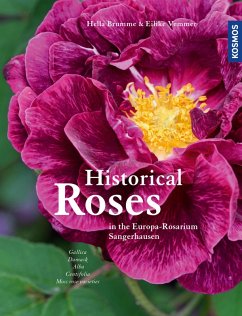Historical roses enchant us with their unparalleled charm, their scent and the superb spectrum of their colours and shades from white to carmine and velvety violet. For thousands of years they have been cultivated for medicinal purposes, the production of rose oil and perfume, and for their versatility, grace and beauty. In this book Hella Brumme and Eilike Vemmer describe the 349 Gallica, Damask, Alba, Centifolia and Moss rose varieties that are to be found in the Europa-Rosarium Sangerhausen, the world's foremost rosarium. Hella Brumme was in charge of the Europa-Rosarium Sangerhausen for 34 years, from 1999 to 2006 as its director. Eilike Vemmer has devoted herself to historical roses for more than 20 years, and both authors are amongst the most competent experts in the field of historical roses. For years the authors have compared the original, historical descriptions to those plants which are today to be found in the rosarium and revised their descriptions. In matchless tables the distinctive characteristics of the various rose classes are contrasted. Frequently occurring confusion of certain historical roses have also been cleared up. With the publication of this work, the Europa-Rosarium Sangerhausen Foundation of the German Rose Society helps to promote the scientific work on the rose collection.
Dieser Download kann aus rechtlichen Gründen nur mit Rechnungsadresse in A, B, BG, CY, CZ, D, DK, EW, E, FIN, F, GR, HR, H, IRL, I, LT, L, LR, M, NL, PL, P, R, S, SLO, SK ausgeliefert werden.









